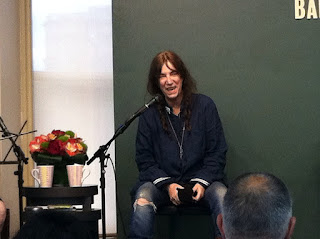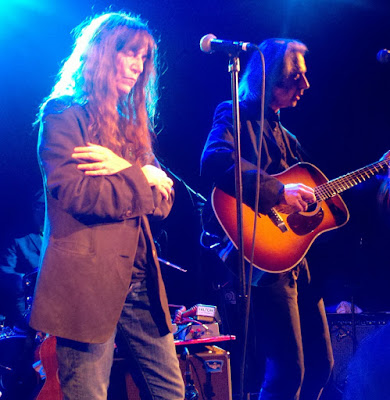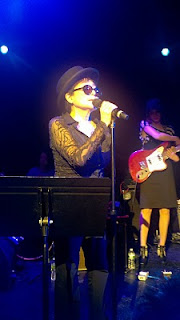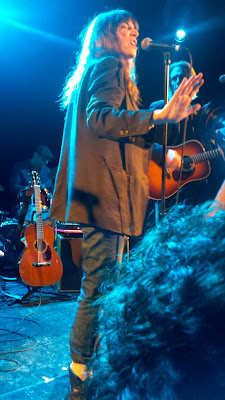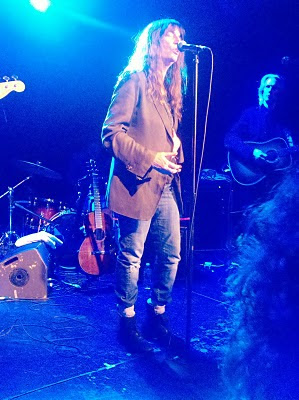 I first met Paul Myers when I interviewed him for CIUT’s morning show back in 2007. He and I spoke about his incredible book on the life and times of Long John Baldry, an under-appreciated musician who cast a long shadow over popular music.
I first met Paul Myers when I interviewed him for CIUT’s morning show back in 2007. He and I spoke about his incredible book on the life and times of Long John Baldry, an under-appreciated musician who cast a long shadow over popular music.
Myers is a true music afficionado. As well as being a musician and songwriter, he’s a damn great music journalist, and has written for the San Francisco Chronicle, the San Francisco Guardian, the Georgia Straight, and the Globe and Mail, among others, keeps a very fine blog where he offers a mix of observation, wit, insight, and just plain love for the hybrid beast that is rock and roll.
Paul’s latest work is called A Wizard, A True Star: Todd Rundgren In The Studio (Jawbone Press), and it documents the incredible, incredibly under-appreciated legacy of musician and studio magician Todd Rundgren. The title is based on Rundgren’s much-loved 1973 album of the same name. Now, I admit that I knew precious little about Rundgren when I began this book, but by its end, I was more convinced than ever of his large, vital footprint on popular music. Most people only know his name from the Liv Tyler connection, or from his producing (and playing on) Meat Loaf’s monster hit album, Bat Out Of Hell.
Rundgren is a multi-faceted, multi-talented person who’s difficult to get a handle on. He produced albums by The Pursuit Of Happiness, Steve Hillage, the New York Dolls, Grand Funk Railroad, The Band, Cheap Trick, The Tubes, as well as Hall and Oates’ War Babies and XTC’s Skylarking (which features their mega-hit, “Dear God”). He released a ton of his own material including Something / Anything? , which contained his best-known work like “Hello It’s Me” and the classic-rock-radio staple”I Saw The Light“. He revolutionized studio technologies and instrumentation. He appeared on Saturday Night Live in the 1970s with Prince. His anthemic, catchy “Bang The Drum All Day” is used widely in commercials. People know his work, but they don’t know him.
Myers’ work gets no closer to really knowing him or plumbing the depths, but it does dig (deep) into his methodologies and techniques within a studio context -an approach that illuminates the hard work that goes on in the rock and roll world, past the boring media stories of drugs and debauchery. Mind you, this video, with Rundgren sporting theatrical costuming and makeup, implies a kind of gritty-glam debauchery that has a direct connection to none other than Lady Gaga herself. Rundgren, influential? Durrrr.
Fabulousness aside, it was the chapter detailing the making of Patti Smith’s Wave that I found most enthralling. Featuring interviews with group members Lenny Kaye, Iva Kral, Richard Sohl, Jay Dee Daugherty, plus producer Rundgren, and the lady herself, it’s a fascinating portrait the ties that bind people, creatively, personally and professionally. Myers’ approach is very detailed and thorough here, as through the entire book; his examination of tunes I’ve long loved -like “Frederick” and “Dancing Barefoot” -were fussy, yes, but they were also genuinely thrilling, and shot through with a musician’s instinctual understanding of the finer points of sonic creation. A Wizard, A True Star is a mix of clinician and musician, mixing the creative and the technical into one fascinating, heady mix.
Paul was kind enough to offer up his own insights into his latest work, and its subject.
Describe Todd’s ultimate role in rock and roll in one line.
My whole book kind of makes the case that Todd Rundgren’s best instrument is the recording studio itself. Sure he’s a great vocal arranger and powerful singer, not to mention a flash guitarist and serviceable drummer, but if you look deeply at his entire 40 year career, there’s a very identifiable way in which he sculpts and blends performances (his own and his clients’) together into something that sounds, for better or worse, like a ‘Todd Rundgren Production’. Oops that’s more than one line!
Why do you think Todd isn’t in the Rock And Roll Hall Of Fame?
The Rock And Roll Hall is a very political body, a lot of great rock artists don’t (or didn’t) have the political capital to grease their nomination into Cleveland. And, of course, Todd has a kind of Orson Welles reputation; there’s much respect for his craft but on a personal level he has been known to bend a few noses out of joint over the years. Maybe Jann Wenner, who has a lot of pull on the RRHOF board, doesn’t like him. Who knows? Also, Todd has often exuded a kind of “who cares” attitude about the whole thing, so maybe they’re put off by that and would rather induct ABBA, whom I love, but can’t see as “rock and roll”.
Why did you decide to do a studio-focused book?
Todd has two parallel careers, as an artist and as a producer of other artists, so once I decided that the studio was his milieu, if you will, it seemed like that was the best setting to tell this incredible story of album after album, and I knew I had to get both Todd AND the artists he produced to tell their story incredible stories. I’m reminded of Hollywood producer Robert Evans’s autobiography and film “The Kid Stays In The Picture”, which opens with a great quote: “There are three sides to every story: my side, your side, and the truth.”
You go into a lot of detail in the studio in terms of production and instrumentation; for instance, when I read the chapter on Patti Smith’s ‘Wave’, I came away with a whole new appreciation of her work and the dynamic within her band. How does this kind of detail help the average music fan get to know Todd’s art?
I make no secret that I am a musician who has also produced recordings, but I am married to a woman who is not a musician but who loves a good story. So I write a little bit for her, as a test “layman”. I tend to split the difference, conversationally, when I tell music stories to her and that’s what I wanted to do here. I don’t make movies, but I love hearing how “green screen” and CG effects are done. My goal is to give the layman just enough information to understand the significance of what is being discussing. Having said that, one of my favourite passages is where Todd describes the effect on Grand Funk (Railroad) singer Don Brewer’s voice on “We’re An American Band”, the Cooper Time Cube. It’s a delay effect that I’d never heard of before, and Todd had to Google it during the interview to see if he even had the name right.
You explore the role Todd played in music / studio technology; how much do you see his influence in things like Autotune, and even something like GarageBand?
I say in the book that over the last decade Todd became less involved with bands, probably due to the fact that the technology for self-recording (some of which he either designed or requested) is so advanced that it has reduced the ‘perceived value’ of a producer. I say ‘perceived’ because I think, just as a bunch of great actors can read surely read a bunch of great lines from a great script without a director, in the end a good director is always welcome. I don’t think Todd had much to do with Autotune, but definitely the spirit of Todd’s original experiments with multi-tracking lives in digital recording software of today. A band like Pomplamoose, who openly film themselves overdubbing all the instruments might appeal to Todd, I’ll have to ask him.
What do you think Todd’s legacy will be 100 years from now?
I would hope that Todd’s legacy will fall into the pantheon of similarly adventurous recording pioneers such as Les Paul, Brian Wilson and the later artists such as Trent Reznor and Prince (both of whom have cited Todd as an early influence). Musically, I think his piano based ballads on Something/Anything? and Hermit Of Mink Hollow will be re-appreciated by the coming crop of bedroom musicians.

